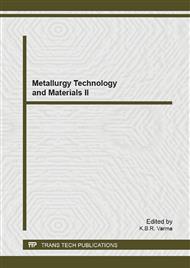p.100
p.104
p.108
p.112
p.116
p.120
p.124
p.129
p.132
Homology Analysis of Prior Austenite Grain Size of SAE52100 Bearing Steel Processed by Cyclic Heat Treatment
Abstract:
Here, we introduce the mathematical methods to quantitatively evaluate the change of the tissue to quenching. SAE 52100 sample was repeatedly quenched and the influence of this cyclic heat treatment was investigated. The repeated quenching process increased the retained austenite content and had little influence on the materials hardness. The prior austenite grain size was decreased and consequently, refinement of the martensitic phase in the material occurred. The higher content of the retained austenite (higher fracture toughness) and the refinement of the microstructure accounted for the higher fatigue properties of the repeatedly quenched material. Here we use mathematical homology to quantify these features.
Info:
Periodical:
Pages:
116-119
Citation:
Online since:
September 2013
Authors:
Keywords:
Price:
Сopyright:
© 2013 Trans Tech Publications Ltd. All Rights Reserved
Share:
Citation:


